The Snake River’s Hells Canyon
Columbia River Basin
|
NEW ESRI StoryMaps: What's On Our Shelves & NWNL Song Library & No Water No Life ESRI |
Columbia River Basin
Pat Schweiger
Jet Boat Captain
Alison M. Jones
NWNL Director and Photographer
All images © Alison M. Jones. All rights reserved.
During the 2014 NWNL Snake River Expedition, we departed from Clarkson WA for a day-long, commercial boat tour into Hells Canyon, captained by Pat Schweiger. Much of this NWNL expedition focused on the Lower Four Snake River Dams and reservoirs. While these now-obsolete dams have facilitated grain transport from this wheat-growing region, they also severely reduced native salmon migrations. Being on the undammed stretch of Hells Canyon offered a great contrast of these exuberant, free-flowing Snake River waters versus the dammed still-water stretches of the Lower Snake (where rail and wind power have now negated the need of its four obsolete dams.)
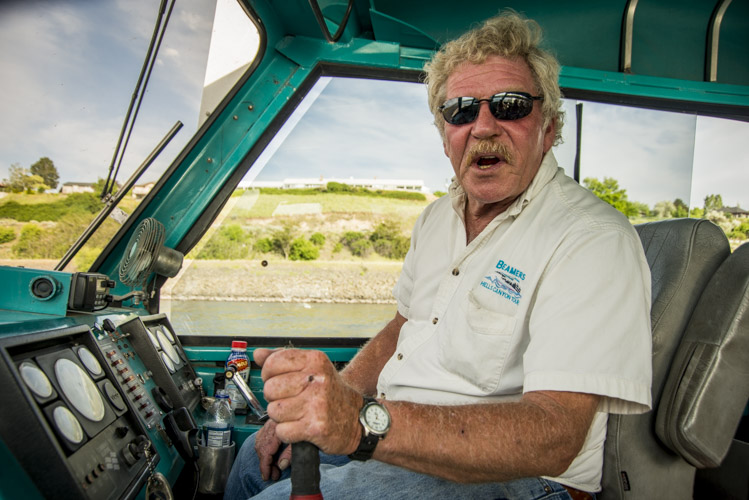
NWNL Pat, what is it that brings you to this river day after day? What is it that you love about your job here in Hells Canyon?
PAT SCHWEIGER I was raised in Clarkson at the confluence of the Snake and Clearwater Rivers. As soon as we were old enough to get out of the house, we were down at the river catching fish and exploring everything else that went along with the river. I’ve just loved it all my life. Thus, my job now is being Captain and a float pilot for Beamers Landing Hells Canyon Boat Tours.
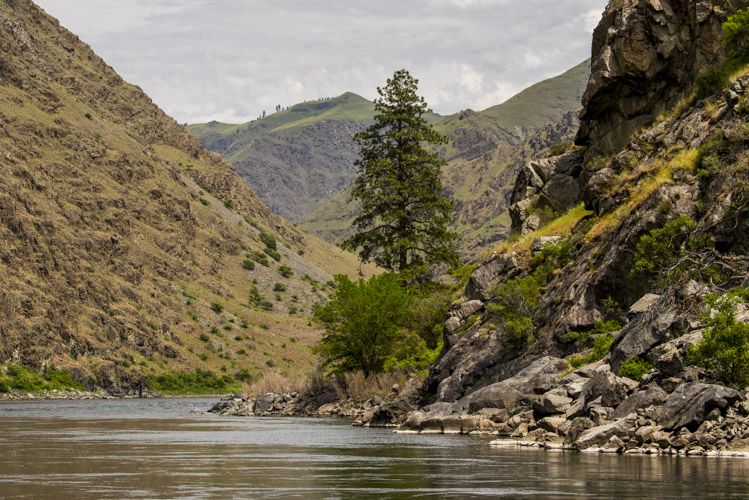
NWNL How would you define the historic values of the Snake River, as well as the current values. Are they distinct in your opinion?
PAT SCHWEIGER Historically the Snake River wouldn’t have been what it is without boats. The first industry that began on the estuary of the Snake River was raising a lot of sheep. Quite a lot of people produced a lot of wool and used the Snake River to get the wool to the market. They got their supplies with the old paddle wheelers.
There’s been boat traffic ever since. It still employs a lot of people. Everybody in the world should see this river. Hells Canyon is the most beautiful place around. People that come here love it. A lot of them come back, time after time after time.
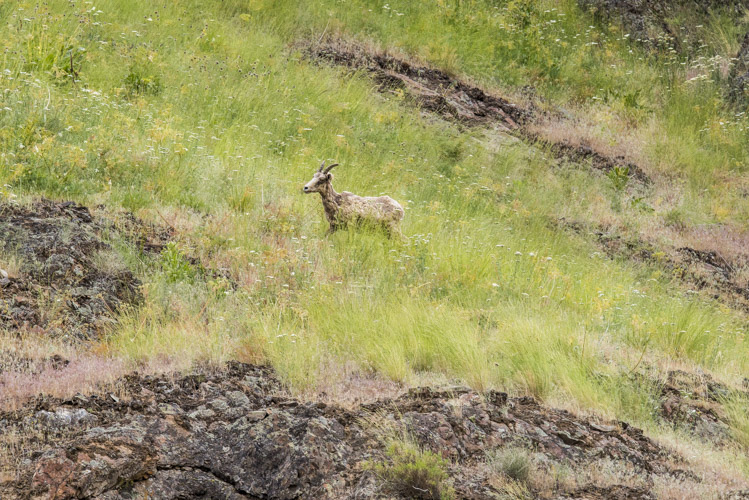
NWNL There has also been mining along this river, right? What have been the impacts, successes and failures of mining here?
PAT SCHWEIGER There has been mining on the Snake, but not very much. Nobody’s ever become rich doing it. They’ve found a couple of pockets of this and that mineral, but not enough to employ a lot of miners. The mining here was pretty short lived.
NWNL Did mine tailings have any toxic impact on the river?
PAT SCHWEIGER Not the type of mining they did. As far as I’ve read and heard, the mining here is different from that in areas that used chemicals and such. Here mining has been mostly panned out by hand, dug out of the hillside, and dry mined – but not a lot of that. I don’t think there are any impacts at all in this part of the canyon.
NWNL What challenged does Snake River face today from your point of view? For instance, do you see degradation from climate change, droughts, or low-ebb water levels? Are there changes in water levels? And, if so, what effects do you see on fish populations – or your tourism?
PAT SCHWEIGER We’ve got lots of fish left. When the water’s real low, it makes it harder to navigate; but we still get by. I think low-water and high-water years come in a cycle. We’ll have a bunch of high-water years, and then once in a while we’ll get a real low-water year – but it doesn’t seem to be a pattern to worry about. We just take it as we go.
I don’t know what to expect this year – perhaps low water again. If so, we would have a low cycle two years in a row. It’s usually just one.
NWNL I understand that last year was one of your lowest years here.
PAT SCHWEIGER Yes, last year was one of the driest years for a long time on the Snake River. Historically, the 15th of June is usually when the Snake and the Salmon and their tributaries peak.
Last year was the lowest level that Snake ran in almost 20 years. But that was just for a short period of time. Then later, there was actually more water than we normally expect down here, because of the dams up above. They’ve got to make their dollar too, you know.
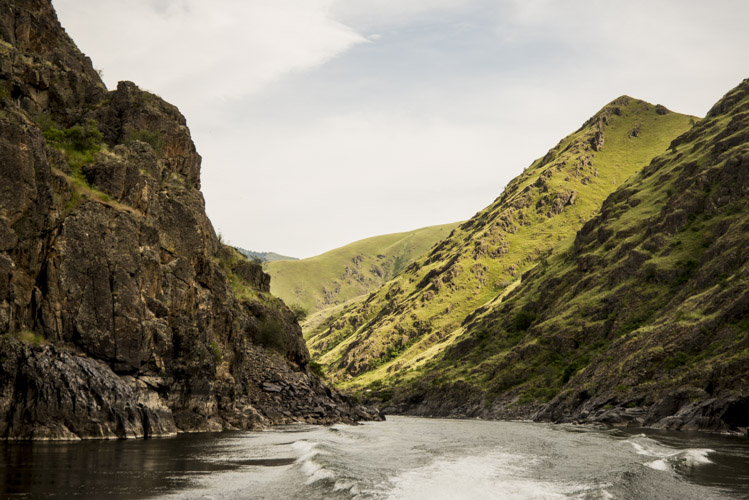
NWNL So, given that comment, what are your feelings about the dams on the Snake River?
PAT SCHWEIGER Well, what would we do without them? I think the dams do more good than harm. Idaho Power does year-round, various studies to make sure the fish population stays up. If they were to take the dams out, it would be the worst mistake they ever made, especially on the Lower River. It would be ruined. It would be just a big swamp.
NWNL As our boat went upstream, there were various markers. You noted one was at “Level 6.” What does that indicate to you about this year’s river depth?
PAT SCHWEIGER That is a Johnson’s Gauge – an actual mark that tells you how much water is coming out of Hell’s Canyon Dam. Level 6 is right around 10,000 cubic feet per second. Well, that’s more of a mid-summer level, not this time of year. Yet it’s springtime now. We should be getting more water right now, but we’re not.
NWNL How do I best grasp the implications of 10,000 feet per seconds? What is a normal flow for springtime?
PAT SCHWEIGER Springtime normal is 20,000 feet per second, or maybe double that. I kind of sense this is going to be kind of a low-water year; but maybe not a terrible one. We’ll get by. We always do.
NWNL Is there anything happening on the Snake River these days that concerns you?
PAT SCHWEIGER Not really. It seems to be managed real well. Boat traffic, floaters, we all try to get along. As far as I’m concerned, the river is about like it always was; not getting any worse, not getting any better. It’s just the old Snake River.
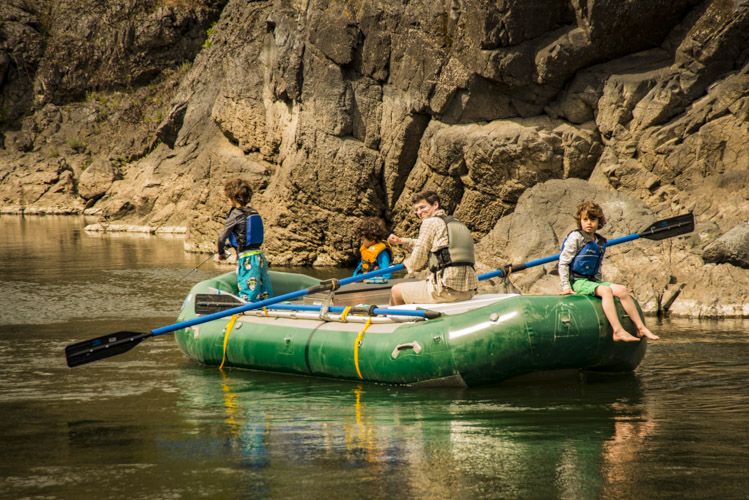
NWNL Do you see changes in river sediment or turbidity?
PAT SCHWEIGER Not really. But of course, in the springtime you have high water, which gets muddy as it brings down sediment. That’s natural. I don’t see much wrong with that.
NWNL I’ve been told there has been an increase in erosion, partly due to an increase in wildfires. Some are concerned about larger sediment loads come into the rivers. Particularly, folks are concerned that if excess sediment comes in at spawning time, it’ll cover the eggs, and thus smother and kill them.
PAT SCHWEIGER Well, there’s really nothing you can do about that. The fires are usually caused by lightning, Mother Nature. Runoff is natural. Nothing you can do about that. We have the hatcheries to back up our natural native fish. In fact, there’s more native fish, salmon and steelheads than hatchery fish, so the wild fish are doing well.
NWNL Do you think there’s a continuing need for hatchery fish?
PAT SCHWEIGER Can’t hurt.
NWNL I do hear some people say the hatchery fish are not good for the recovery of the wild population. Do you hear any of that talk?
PAT SCHWEIGER If you look way back, are there really any native fish left from, say 1,000 years ago? Or are there just hatchery fish and ones that didn’t get clipped and thus spawn naturally instead of going back to the hatchery?
NWNL Well, with that intriguing question, which we don’t have time to pursue now, I will let you get back to the wheel and return us to the dock at Clarkston! Thank you so much for your Hells Canyon knowledge and for sharing your thoughts, Pat.
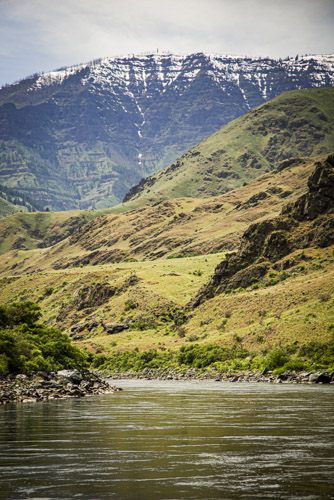
Posted by NWNL on November 19, 2019.
Transcription edited and condensed for clarity by Alison M. Jones.
All images © Alison M. Jones. All rights reserved.
